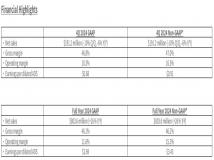本文介绍Ubuntu系统中Apache2服务器的配置方法,希望对于初学Apache服务器相关的朋友有帮助,更多Apache安装、配置、报错处理等资源请本站内搜索。
1.apache2.conf 是主配置文件,httpd.conf 用户配置文件
2.虚拟目录在 httpd.conf 中
<VirtualHost *>
DocumentRoot "路径"
ServerName 名称
<Directory "路径"> allow from all Options +Indexes </Directory>
</VirtualHost>
3.根设置(默认主目录)在 /etc/apache2/sites-available/default
4.重启命令
sudo /etc/init.d/apache2 restart或者
cd /etc/init.d
sudo apache2 -k restart
stop 停止;start 启动5.日志文件在 /var/log/apache2/
<VirtualHost *:80>
ServerName www.a.com
DocumentRoot /home/vsftpd/kimoqi
</VirtualHost>
<VirtualHost *:80>
ServerName www.server110.com
DocumentRoot /home/vsftpd/wangguan/webapps
</VirtualHost>
<VirtualHost *:80>
ServerName www.c.org.cn
DocumentRoot /home/vsftpd/wangguan/chem
</VirtualHost>
vi /etc/httpd/conf/httpd.conf
在Windows下,Apache的配置文件通常只有一个,就是httpd.conf。但我在Ubuntu Linux上用apt-get install apache2命令安装了Apache2后,竟然发现它的httpd.conf(位于/etc/apache2目录)是空的!进而发现Ubuntu的 Apache软件包的配置文件并不像Windows的那样简单,它把各个设置项分在了不同的配置文件中,看起来复杂,但仔细想想设计得确实很合理。
严格地说,Ubuntu的Apache(或者应该说Linux下的Apache?我不清楚其他发行版的apache软件包)的配置文件是 /etc/apache2/apache2.conf,Apache在启动时会自动读取这个文件的配置信息。而其他的一些配置文件,如 httpd.conf等,则是通过Include指令包含进来。在apache2.conf中可以找到这些Include行:
# Include module configuration:
Include /etc/apache2/mods-enabled/*.load
Include /etc/apache2/mods-enabled/*.conf
# Include all the user configurations:
Include /etc/apache2/httpd.conf
# Include ports listing
Include /etc/apache2/ports.conf
……
# Include generic snippets of statements
Include /etc/apache2/conf.d/
# Include the virtual host configurations:
Include /etc/apache2/sites-enabled/
结合注释,可以很清楚地看出每个配置文件的大体作用。当然,你完全可以把所有的设置放在apache2.conf或者httpd.conf或者任何一个配置文件中。Apache2的这种划分只是一种比较好的习惯。
安装完Apache后的最重要的一件事就是要知道Web文档根目录在什么地方,对于Ubuntu而言,默认的是/var/www。怎么知道的呢? apache2.conf里并没有DocumentRoot项,httpd.conf又是空的,因此肯定在其他的文件中。经过搜索,发现在 /etc/apache2/sites-enabled/000-default中,里面有这样的内容:
NameVirtualHost *
<VirtualHost *>
ServerAdmin [email protected]
DocumentRoot /var/www/
……
这是设置虚拟主机的,对我来说没什么意义。所以我就把apache2.conf里的Include /etc/apache2/sites-enabled/一行注释掉了,并且在httpd.conf里设置DocumentRoot为我的用户目录下的某 个目录,这样方便开发。
再看看/etc/apache2目录下的东西。刚才在apache2.conf里发现了sites-enabled目录,而在 /etc/apache2下还有一个sites-available目录,这里面是放什么的呢?其实,这里面才是真正的配置文件,而sites- enabled目录存放的只是一些指向这里的文件的符号链接,你可以用ls /etc/apache2/sites-enabled/来证实一下。所以,如果apache上配置了多个虚拟主机,每个虚拟主机的配置文件都放在 sites-available下,那么对于虚拟主机的停用、启用就非常方便了:当在sites-enabled下建立一个指向某个虚拟主机配置文件的链 接时,就启用了它;如果要关闭某个虚拟主机的话,只需删除相应的链接即可,根本不用去改配置文件。
mods-available、mods-enabled和上面说的sites-available、sites-enabled类似,这两个目录 是存放apache功能模块的配置文件和链接的。当我用apt-get install php5安装了PHP模块后,在这两个目录里就有了php5.load、php5.conf和指向这两个文件的链接。这种目录结果对于启用、停用某个 Apache模块是非常方便的。
最后一个要说的是ports.conf,这里面设置了Apache使用的端口。如果需要调整默认的端口设置,建议编辑这个文件。或者你嫌它实在多 余,也可以先把apache2.conf中的Include /etc/apache2/ports.conf一行去掉,在httpd.conf里设置Apache端口。
ubuntu里缺省安装的目录结构很有一点不同。在ubuntu中module和 virtual host的配置都有两个目录,一个是available,一个是enabled,available目录是存放有效的内容,但不起作用,只有用ln 连到enabled过去才可以起作用。对调试使用都很方便,但是如果事先不知道,找起来也有点麻烦。
/etc/apache2/sites-available 里放的是VH的配置,但不起作用,要把文件link到 sites-enabled 目录里才行。
<VirtualHost *>
ServerName 域名
DocumentRoot 把rails项目里的public当根目录
<Directory public根目录>
Options ExecCGI FollowSymLinks
AllowOverride all
allow from all
Order allow,deny
</Directory>
ErrorLog /var/log/apache2/error-域名.log
</VirtualHost>
One Response to 'ubuntu apache2配置'在Ubuntu中安装apache
安装指令:sudo apt-get install apache2
安装结束后:
产生的启动和停止文件是:/etc/init.d/apache2
启动:sudo apache2ctl -k start
停止:sudo apache2ctl -k stop
重新启动:sudo apache2ctl -k restart
配置文件保存在:/etc/apache2
需要说明的是,普通的apache发行版本配置文件是:
httpd.conf
Ubuntu发行版本的主配置文件是:
apache2.conf
在apache2.conf引用到了以下文件:
# 包含动态模块的配置:
Include /etc/apache2/mods-enabled/*.load
Include /etc/apache2/mods-enabled/*.conf
# 包含用户自己的配置:
Include /etc/apache2/httpd.conf
# 包含端口监听的配置:
Include /etc/apache2/ports.conf
# 包含一般性的配置语句片断:
Include /etc/apache2/conf.d/
# 包含虚拟主机的配置指令:
Include /etc/apache2/sites-enabled/
修改httpd.conf
增加以下内容:
ServerName 127.0.0.1:80
进一步的配置和使用,就可以查阅APACHE的手册了
声明: 此文观点不代表本站立场;转载须要保留原文链接;版权疑问请联系我们。










